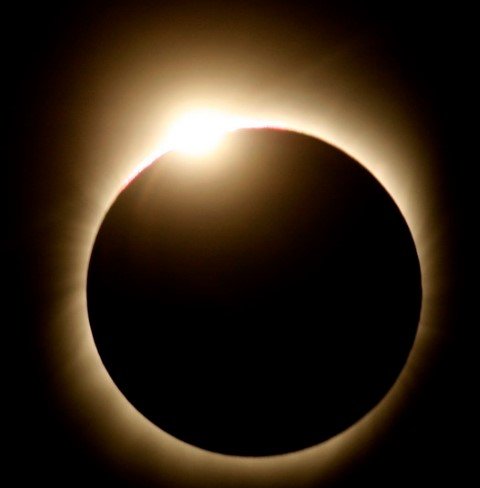Once-in-a-lifetime eclipse to pass over Europe, North Africa, and Middle East, lasting over six breathtaking minutes
In a rare astronomical event not seen in decades, a total solar eclipse is set to cast a shadow over parts of southern Europe, North Africa, and the Middle East. And this time, it’s not just the spectacle that’s capturing attention—it’s the sheer length. At six minutes and 23 seconds, this eclipse is expected to become the longest total solar eclipse visible from land between the years 1991 and 2114, according to NASA and astronomical bodies tracking the event.
Such extended totality is more than just a curiosity—it’s an opportunity. Scientists, tourists, and eclipse-chasers are already planning for what many are calling the “crown jewel of celestial events” this decade.
Why This Eclipse Is So Different
The mechanics behind a solar eclipse are well understood—when the Moon passes directly between Earth and the Sun, it casts a shadow that can briefly block sunlight on a narrow path along Earth’s surface. But what makes the August 2027 eclipse stand apart is the alignment of three celestial bodies at extraordinarily favorable distances.
-
Earth will be near aphelion — the farthest point in its orbit from the Sun.
-
The Moon will be at perigee — its closest approach to Earth.
-
The Sun will thus appear smaller, while the Moon will look slightly larger, making it possible for the Moon to completely obscure the Sun for longer.
Most total eclipses last around 2–3 minutes. This one will double that duration in certain regions, especially across Egypt and central Saudi Arabia.
“It’s like a cosmic coincidence where all the gears in the universe click into perfect alignment,” said Dr. Farah Nour, astrophysicist at the University of Cairo. “We won’t see this kind of prolonged darkness again in our lifetime—at least not from land.”

Where and When to See It
The path of totality—the narrow track across Earth where the eclipse will be visible in its fullest form—cuts a wide arc from the Strait of Gibraltar, across southern Spain, and through parts of Algeria, Tunisia, Libya, Egypt, Saudi Arabia, and even Yemen before ending over the Arabian Sea.
Key Regions in the Eclipse Path:
| Location | Duration of Totality | Local Time (Approx.) |
|---|---|---|
| Luxor, Egypt | 6m 12s | 12:05 PM |
| Mecca, Saudi Arabia | 5m 58s | 12:13 PM |
| Granada, Spain | 4m 49s | 11:37 AM |
| Tunis, Tunisia | 5m 10s | 11:42 AM |
| Sana’a, Yemen | 6m 20s | 1:21 PM |
Those outside the path of totality will still witness a partial eclipse, depending on location, cloud cover, and altitude.
A Surge in Astro-tourism—And Planning Begins Now
The global travel and tourism sector is already bracing for an unusual summer spike in 2027. Specialized travel companies in Europe and the Middle East have begun advertising “eclipse tours,” complete with astronomy lectures, mountaintop viewing spots, and solar-filtered cameras.
In Egypt, where the eclipse will reach one of its longest durations, hotels in Luxor and Aswan are expecting surges in demand akin to a holiday rush.
“We’re preparing now,” said Ayman Radwan, manager of a luxury eco-lodge near the Nile. “Bookings for August 2027 are already coming in—mostly from American, Japanese, and German astronomy groups.”
Some cities are even developing temporary infrastructure for the occasion, including mobile observatories, traffic redirection, and rooftop access to allow for optimal viewing.
Things to Keep in Mind for Eclipse Watchers:
-
Never view the Sun directly without certified eclipse glasses.
-
Check local weather forecasts and altitude for the best chance of clear skies.
-
Arrive at viewing spots well in advance to avoid congestion.
Scientists Eye Rare Opportunities
For solar physicists, an eclipse of this length is a golden opportunity. The Sun’s corona—the halo of plasma that surrounds it—is only visible during totality. Longer duration means more time to study magnetic structures, solar wind dynamics, and coronal mass ejections (CMEs).
Research teams from European Space Agency, NASA, and several universities are already coordinating joint observation programs in Egypt, where totality will peak.
“This could be the best field lab we get this century,” noted Dr. Erik Müller, who studies heliophysics at the Max Planck Institute for Solar System Research.
Not Just a Science Event—A Cultural Moment Too
Historically, total solar eclipses have been feared, celebrated, and recorded in oral traditions and folklore. In 2027, this celestial shadow may serve a more unifying purpose.
In a region often marked by division and geopolitical strain, the eclipse will stretch across three continents, ten countries, and diverse faiths and cultures. Some are already calling it the “Peace Eclipse” for its symbolic potential.
“There’s something humbling about seeing day turn to night in silence, together,” said Lebanese poet Rana Tahan, who plans to watch the eclipse from Petra, Jordan.
